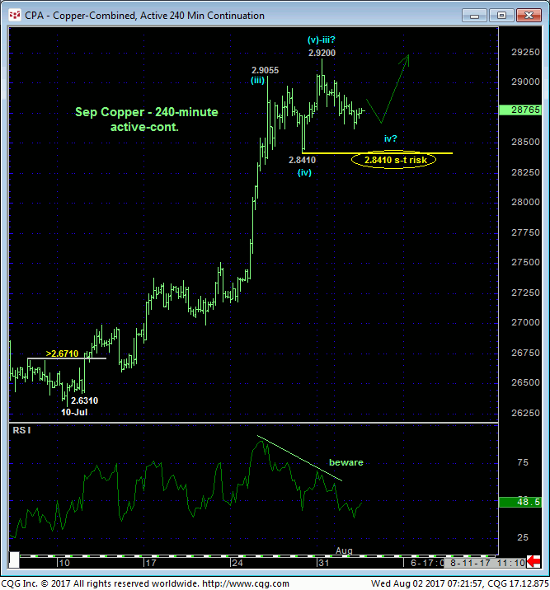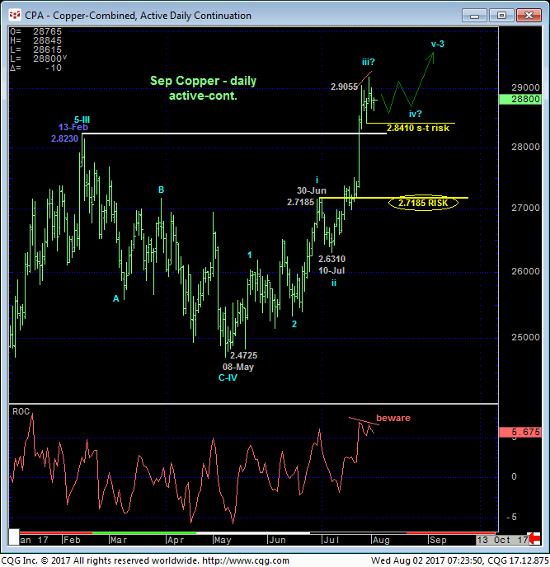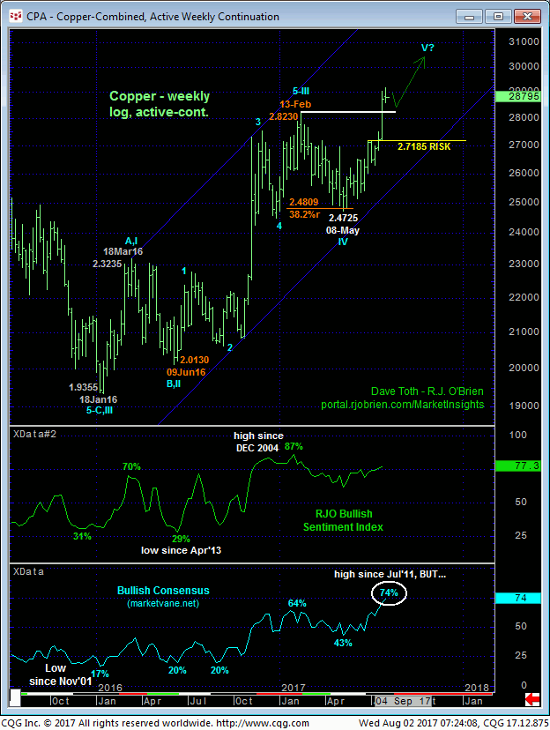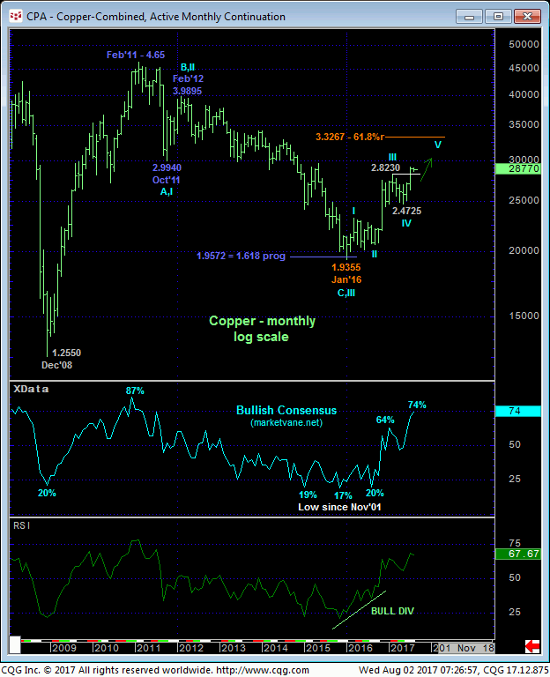
Following a short-term whipsaw below 26-Jul’s 2.8445 corrective low and short-term risk parameter discussed in 27-Jul’s Technical Blog, the 240-min chart below shows that the bull’s subsequent resumption to yet another round of new highs left 28-Jul’s 2.8410 low in its wake as the latest smaller-degree corrective low and new short-term risk parameter this market is now minimally required to fail below to defer or threaten a bullish count. And even if the market does fail below this point, the extent and accelerated nature of the past month’s portion of the bull and the magnitude of May-Jun’s base-building that preceded it strongly suggests an “extended” move higher that warns of multiple corrective 4th-wave setbacks and 5th-wave resumptions of the bull before it exhausts itself.

The daily chart below shows the amount of base-building effort the market put it during May-Jun with the pay-off being the extent and accelerated nature of the rally from the late-Jun lows. We believe this accelerated rally to be a 3rd-Wave “extension” characterized by obvious underlying strength. Typically, such tremendous strength rarely evaporates quickly, but rather takes time to slow down before becoming vulnerable to a reversal. This slow down process includes 4th-wave corrective setbacks and subsequent 5th-wave resumptions of the bull to new highs.
Such corrective setbacks are indicated by a confirmed momentum failure below a prior corrective low like last Fri’s 2.8410 low and short-term risk parameter discussed above. And shorter-term traders with tighter risk profiles are advised to manage the risk of bullish exposure if/when the market fails below such a level. But clearly, such relatively small weakness is of an insufficient scale to conclude anything more than an interim corrective hiccup within the context of the major uptrend. Only commensurately larger-degree weakness will suffice in concluding a more significant peak/reversal threat. And we believe such proof is required in the form of a failure below at least 30-Jun’s 2.7185 high and area of former resistance-turned-support to jeopardize the impulsive integrity of a what we still believe is a major bull trend.


Indeed, the weekly (above) and monthly (below) shows last week’s resumption of a YEAR-AND-A-HALF uptrend and MAJOR CORRECTION or REVERSAL of the secular bear market from Feb’11’s 4.65 all-time high to Jan’16’s 1.9355 low. That was a 5-YEAR bear market. The current rebuttal is “only” 18 months long, inferring that the remainder of the correction or reversal higher is indeterminable and still potentially major in scope (i.e. months, quarters or even years).
The 3.00-area poses a major former support-turned-resistance condition that must be respected. And if the market has a wall planned there, the market would be expected to indicate this to us in the form of waning upside momentum and an eventual CONFIRMED bearish divergence leading up to it that should not be all that hard to recognize. Until or unless a momentum failure of a scale sufficient to threaten the major uptrend materializes, further and possibly extensive gains will remain expected.
Notable in these long-term charts is the understandable rise to 74% in the Bullish Consensus (marketvane.net) measure of market sentiment. This is the highest reading in SIX YEARS and typical of major PEAK/reversal-threat conditions. But traders are reminded that sentiment/contrary opinion indicators are not applicable in the absence of a confirmed bearish divergence in momentum of a scale sufficient needed to, in fact, break the major uptrend. Herein lies the importance of our longer-term risk parameter at 2.7185, NOT our short-term risk parameter at 2.8410.
In sum, a bullish policy remains advised with a failure below 2.8410 required for shorter-term traders to step aside and for longer-term players to pare bullish exposure to more conservative levels. Ultimately however, commensurately larger-degree weakness below 2.7185 is required to jettison long-term positions altogether ahead of a peak/reversal threat that at that point could be considered severe. In lieu of such weakness further and possibly extensive gains remain expected.


